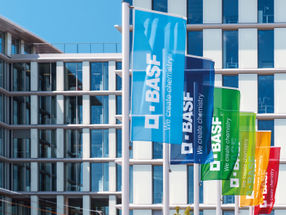Important Feedstock for the Chemical Industry: Ceresana Analyzes the Global Market for Benzene
benzene is needed for the production of important industrial chemicals; it is, for example, a feedstock for polystyrene and nylon fibers. The market research institute Ceresana expects global demand for this basic raw material to increase. Until 2021, market volume will rise by more than 7 million tonnes; revenues generated with benzene are projected to amount to more than US$69 billion that year. Currently, the Middle East/ Africa and Asia-Pacific are substantially increasing production capacities for benzene and its downstream products.
More Benzene from the Middle East and Africa
Benzene producers in the Middle East and Africa are likely to significantly increase their share of worldwide benzene production. Ceresana expects them to increase their world market share by 4 percentage points until 2021. As demand in these regions is increasing less dynamically than production, a large part of Middle Eastern/ African benzene output is directed to the world market. This is putting pressure on producers in Western Europe and North America. Production of benzene in established industrialized countries is projected to stagnate.
Growth Motor China
Asia-Pacific is dominating the market for benzene and will continue to account for almost half of global demand. China became the worldwide largest consumer of benzene, followed by the USA, in 2013. Even though growth rates will not be in the double-digit range in the foreseeable future, China will remain the growth motor for global benzene consumption. Growth impulses originate in the packaging and electronics industries as well as the automotive sector.
Falling Output in North America
Benzene is a colorless, pleasant-smelling liquid that is mainly obtained as by-product in steam crackers or catalytic refining or is manufactured directly from toluene. Due to the shale gas boom, steam crackers in North America, the USA in particular, are increasingly using ethane rather than naphtha as feedstock. Consequently, yields of benzene in these crackers are falling. Thereby fracking contributes to the reduction of benzene production in North America.
Main Application Ethylbenzene
Benzene is carcinogenic and therefore hardly used as solvent anymore. Yet it is still needed as a precursor for the chemical synthesis of many compounds, mainly ethylbenzene, cumene, cyclohexane, nitrobenzene, and alkylbenzene. The most important consumers of benzene are manufacturers of ethylbenzene, who process more than half of total global consumption. Ethylbenzene is primarily used to produce styrene, which is in turn mainly processed into polystyrene and EPS. Ceresana expects producers of ethylbenzene to continue to expand their share of all demand for benzene until 2021.
Manifold Application Possibilities
The production of cumene is the second largest sales market for benzene, followed by cyclohexane. These two intermediates account for one fifth and one tenth of worldwide benzene consumption respectively. Cumene is mainly used to manufacture phenol and acetone, and is therefore also a precursor for bisphenol A, phenolic resins, caprolactam, and methyl methacrylate. Cyclohexane is primarily utilized in the production of nylon fibers, which are processed into textiles and engineering plastics. Other applications for benzene are nitrobenzene used to manufacture aniline and alkylbenzene that is utilized as detergent.
Most read news
Other news from the department business & finance

Get the chemical industry in your inbox
From now on, don't miss a thing: Our newsletter for the chemical industry, analytics, lab technology and process engineering brings you up to date every Tuesday and Thursday. The latest industry news, product highlights and innovations - compact and easy to understand in your inbox. Researched by us so you don't have to.



























































